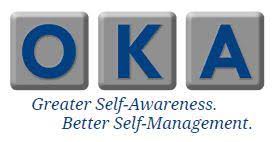You can’t teach an old dog new tricks, or life begins at forty.
Which is it?
Teaching Christine–using the MBTI
Christine, 38 years old, struggled in her new position to understand and motivate her staff. Five years prior, she claimed she would have just forced her new direct reports to do her bidding or replace them with people who would. Now, however, she claimed that she felt she had both more options and more pressure to find solutions that didn’t treat people as expendable. Christine used the Myers-Briggs with her staff, practicing, exploring and teaching all kinds of new behaviors and finding new ways of interacting with each other.
Teaching John–using the EQ-i
John had been told for most of his life that he lacked assertiveness, but lacking assertiveness, John never stepped up to the difficulty of changing his behavior. Now in his early forties, John engaged with the EQ-i and decided that his low Assertiveness score reflected a weakness and a potential career-derailer. He then crafted a personal development plan that pushed him to boost his assertiveness and take more control of his life. Like Christine, John needed the maturity, wisdom and perhaps even the fatigue and bruising of mid-life to engage in new behavior. Not only was he more able at mid-life to do this personal development work, he was not even fully able to do it until he crossed that maturity threshold.
As someone who has spent a career in personal and professional development coaching and training, I am certain that there are lessons that can be noticed and integrated only with the growth and balance that come, generally, with age and maturity. So not only can you teach an old dog new tricks, there are some tricks so challenging, that only old dogs can handle them.



Leave a Comment